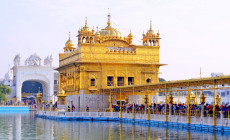-
Latin America
Latin America
- Countries (hidden space)
- Galapagos & Ecuador
- Guatemala
- Mexico
- Panama
- Peru
- Popular Attractions
- Machu Picchu
- Inca Trail
- Easter Island
- Galapagos Islands
- Patagonia
- Rio de Janeiro
- Iguazu Falls
-
Africa
Africa
- Spacer Africa
- South Africa
- Zimbabwe
- Popular Attractions
- Cape Town
- Okavango Delta
- Sossusvlei Dunes
- Victoria Falls
- The Kruger
- The Garden Route
- Masai Mara
-
Asia
Asia
- Spacer Asia
- Laos
- Sri Lanka
- Uzbekistan
- Vietnam
- Popular Attractions
- Taj Mahal
- Lion Rock (Sigiriya)
- Angkor Wat
- Ha Long Bay
- Kyoto
- Europe & Middle East
-
Destinations
- Latin America
- Argentina
- Bolivia
- Brazil
- Chile
- Colombia
- Costa Rica
- Galapagos & Ecuador
- Guatemala
- Mexico
- Panama
- Peru
- Asia
- Cambodia
- India
- Japan
- Laos
- Sri Lanka
- Uzbekistan
- Vietnam
- Middle East
- Jordan
- Southern & East Africa
- Botswana
- Kenya
- Namibia
- South Africa
- Zimbabwe
- Europe
- Slovenia
- All Holiday Destinations
- Contact Us
-
About
About
Llama Travel provides high quality holidays at the lowest possible prices.
99% recommend us Lower prices - guaranteed Financially protected by ATOL
Situated in Punjab in the north of India, Amritsar is home to one of the holiest sites in Sikhism: the Golden Temple. The gleaming gold gurdwara sits in the middle of a placid man-made lake, and at night you can see its bright lights reflected in the still waters. The temple is constructed from bone-white marble and overlaid with gold leaf inside and out. The original golden temple was built by Guru Arjan, the fifth Sikh Guru, in the late 16th century. Not long after its completion, Guru Arjan was arrested and executed by the Mughals, leading Sikhs to abandon the site for fear of persecution. When the Sikhs returned in the 18th century they faced great oppression, and the temple was repeatedly attacked and defiled, eventually being blow up with gunpowder in 1762. When it was rebuilt almost 50 years later, they used almost 400kg of gold leaf.
Nearby Amritsar is the Wagah-Attari border, the only open land border between India and Pakistan. At the end of each day, the two nations’ security forces engage in an elaborate border-closing ceremony involving choreographed marching drills and flamboyant high kicks. Crowds from both countries flock to witness the ceremony each day (which has been compared to Monty Python’s “Ministry of Silly Walks” sketch).
Amritsar is also home to the partition museum, which tells the story of the partition of India, Pakistan and Bangladesh, one of the most defining events in the history of the subcontinent. It was the largest migration in human history, with up to 20 million people affected.









